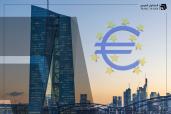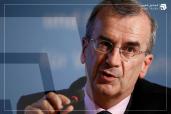Will the European Central Bank lower interest rates in its last meetings of the year to alleviate pressures on the economy? The expected scenario.

The European Central Bank is set to make its decision on interest rates in its last meeting of the year on Thursday, with a likely reduction of 25 basis points to 3%. This will represent the third consecutive cut in borrowing costs, following previous reductions from 4% to 3.25% in 2024.
While a rate cut scenario is widely anticipated, the guidance from the European Central Bank regarding future policy will be a crucial matter for the markets, especially as the eurozone faces significant economic challenges, most notably slow growth.
Inflation and Economic Growth Forecasts
The quarterly economic outlook report scheduled to be released by the European Central Bank during this meeting is expected to be a significant part of the discussion. Although inflation in the eurozone has slowed considerably thus far, there remains a great deal of uncertainty regarding the path of interest rates and further slowdowns in inflation rates.
Economists expect the European Central Bank to lower its inflation forecasts for 2025, potentially revising projections from 2.2% in September to around 2%. This adjustment reflects a decreased risk of accelerating inflation or its persistence at high levels, which could prompt the European Central Bank to continue gradually cutting interest rates until it reaches the neutral rate.
While inflation remains a priority for the European Central Bank, the weak economic growth outlook in the eurozone is increasingly becoming a topic of discussion among monetary policymakers at the bank. The region's economy recorded growth of only 0.4% in the third quarter of 2024, its fastest pace in two years, but still below the European Central Bank’s growth expectations.
Given the ongoing weak GDP growth and the economic contraction being experienced in Germany—the region’s largest economy—further interest rate cuts by the European Central Bank may be justified to stimulate demand and support investment.
Expectations for Continued Monetary Easing in 2025
Economists and analysts expect the European Central Bank to maintain its rate-cutting cycle until 2025, and major banks have made the following predictions regarding the central bank’s actions:
Bank of America has revised its forecasts, now expecting the European Central Bank to cut interest rates at every meeting until September 2025, with the rate reaching 1.5% by the end of next year. Analysts at Bank of America believe the eurozone economy will continue to grow without trend, making it difficult for the European Central Bank to halt rate cuts until the rate gradually falls below the neutral level of 2%. They anticipate the neutral interest rate will stabilize at around 1.5%.
Danske Bank shares similar forecasts, expecting a series of 25 basis point cuts over the next two years, ultimately bringing the European Central Bank's rate down to 1.5%. This will help stimulate demand by making borrowing cheaper for households and businesses, especially in sectors that heavily rely on credit, such as real estate and small businesses.
Goldman Sachs also anticipates steady rate cuts, projecting that the interest rate could reach 1.75% by mid-2025, slightly higher than other forecasts. In the press conference following the December meeting, Goldman Sachs expects ECB President Christine Lagarde to signal more cuts starting in January 2025, as economic conditions call for continued easing.
Impact of ECB Decision on Euro Movements and Financial Markets
The continuation of the European Central Bank's more accommodative stance on interest rates is expected to exert downward pressure on the euro, as analysts foresee the euro resuming its downward trend, especially considering that the ECB’s policies differ from those of other major central banks, particularly the Federal Reserve.
On the other hand, Bank of America anticipates modest downward risks for the euro as a result of the ECB's more accommodative stance, noting that a weaker euro would make European exports more competitive globally, benefiting key industrial sectors on the continent, particularly in automotive, machinery, and chemicals.
However, the potential weakness of the euro still poses risks to inflation and growth, as it may also raise the cost of imports, particularly energy and raw material prices, potentially offsetting the benefits of increased exports for companies reliant on imported inputs.
Chris Turner from the ING financial group also expects the euro to continue its downward trend, particularly if macroeconomic factors and geopolitical tensions worsen. The analyst points out that January and February are typically the weakest months for euro performance, and the ECB's more lenient stance on monetary policy may exacerbate this trend.
Expected Scenarios for the ECB's Decision
Scenario One: The ECB could cut interest rates by 25 basis points and President Christine Lagarde might hint at further consecutive cuts to ease economic pressures, especially as inflation approaches the 2% target; this scenario will likely have a negative impact on the euro.
Scenario Two: The less likely scenario is that the ECB offers a larger cut of 50 basis points to provide some support for economic activity, hinting at the possibility of keeping interest rates stable at the beginning of next year. This scenario is also expected to have a negative impact on the euro, but to a lesser extent.









